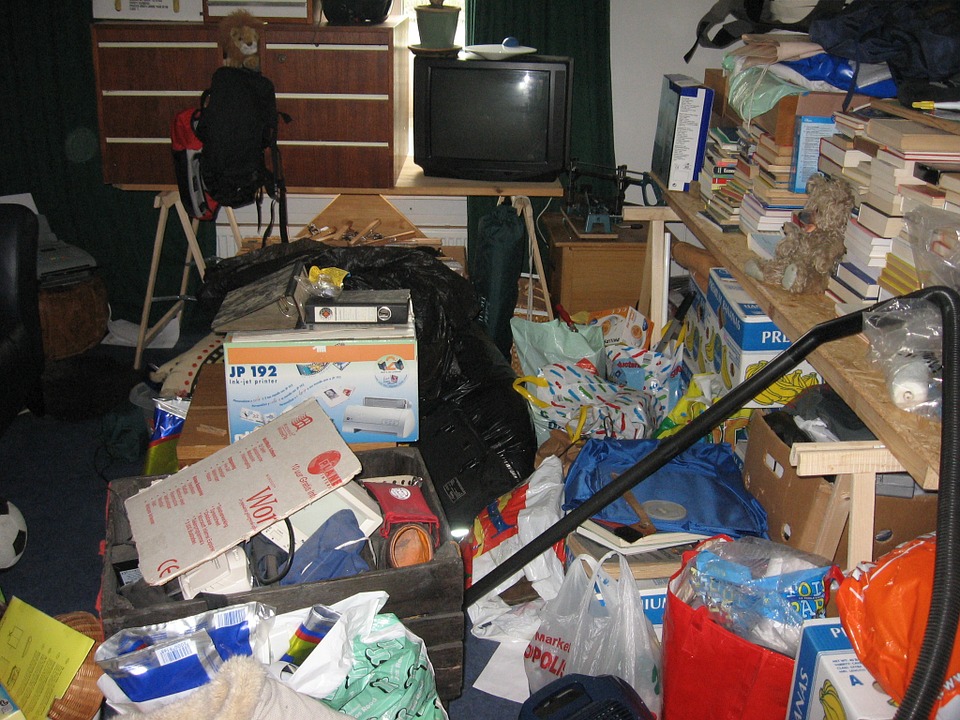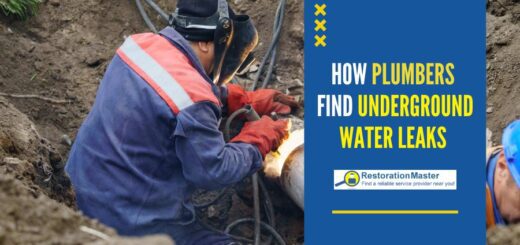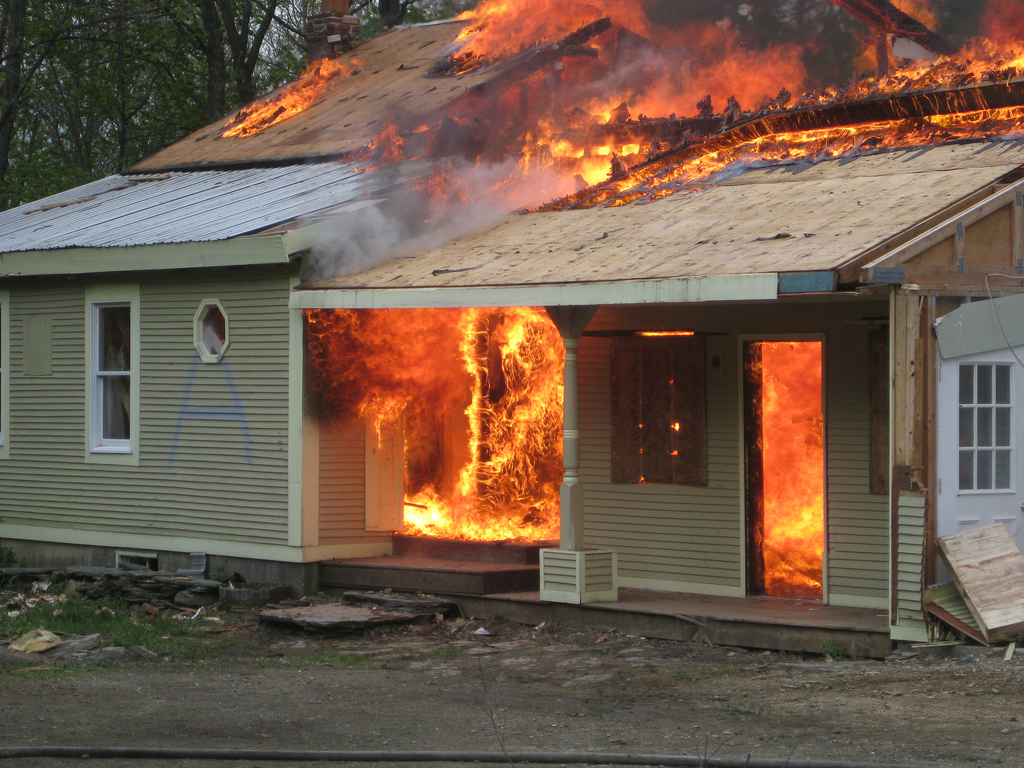Flood Season Preparation Tips
While they are common, floods can be one of the most damaging types of natural disasters. Due to the significant number of sources, they can happen anywhere throughout the U.S particularly after the following:
- Thawing snow
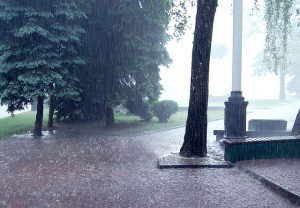
Floods can be caused from a number of sources, including heavy rain.
- Hurricane
- Monsoon
- Several days of rain
Preparing for Flood Season
FloodingFlooding is the overflow or accumulation of water in areas t... More can occur at any time, but spring is the most common season due to frequent showers and melting snow. Preventing a flood from occurring is just about impossible, but limiting the damage it causes to your building materials and belongings is something you can control.
As long as the flood has not occurred already, follow these steps to prevent as much damage as possible during an emergency:
- Consider adding flood insurance to your homeowners insurance plan.
- Watch for flood warnings and alerts on your phone, TV, or radio.
- Be aware of the risk of floodingFlooding is the overflow or accumulation of water in areas t... More in your area.
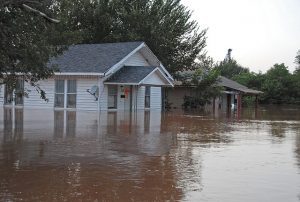
Follow as many of these preparationPreparation is the steps taken to ready a property, equipmen... More tips to limit as much damage as possible during flood season.
- Create and memorize a flood evacuation plan that includes all pets.
- Create a flood preparationPreparation is the steps taken to ready a property, equipmen... More kit that includes at least 3 days of food and water, batteries, a flashlight, first aid kit, and cash.
Flash Flooding
Flash floods are nothing to be taken lightly. They can occur within seconds from growing water levels in a river, stream, or ditch. Be sure to stay alert and follow the steps below as soon as you receive a flash flood warning.
Getting Help After a Flood
If you have already suffered through a flood, never panic. Here are 10 tips on what to do after sustaining flood damage. But the most important step is to call a flood cleanup professional to have your property restored right away. If not, the water can spread throughout the building materials, resulting in increased costs and repairs in the long run.
What the 3 Different Flood Alerts Mean
Flood Watch and Flood Warning: What’s the Difference?
Knowing the difference between a flood watch and flood warning is crucial towards preventing or limiting as much damage as possible during an emergency. The following explains the difference between flood watches and flood warnings:
- Flash flood watch: FloodingFlooding is the overflow or accumulation of water in areas t... More is possible.
- Flash flood warning: FloodingFlooding is the overflow or accumulation of water in areas t... More is occurring and/or is coming to your area. Proceed to follow the steps below.
What to Do During a Flood Watch
Check out these steps on how to properly prepare during a flood watch:
- Review your emergency evacuation plan that includes all pets.
- Know where to find higher ground as quickly as possible on foot.
- Listen to the TV or radio to get the latest weather updates and emergency preparationPreparation is the steps taken to ready a property, equipmen... More instructions.
- Keep the numbers of your insurance and flood cleanup company on hand.
- Prepare or restock your emergency flood kit that includes batteries, a flashlight, cash, a first aid kit, and 3 days of food and water.
Flood Watch: Preparing the Home
- Move all outdoor furniture inside, such as in the garage, shed, or first floor.

Always keep a flood preparationPreparation is the steps taken to ready a property, equipmen... More tool kit ready in case of emergencies.
- Move any important items on the first floor to the highest floor, such as to the attic or upstairs bedrooms.
- Disconnect all appliances and electronics. Do not touch any of this equipment if there is standing water on the property.
- If required, turn off the power and gas to the property to prevent electrical fires or explosions.
What to Do During a Flood Warning
When a flood warning is issued, be sure to take these steps, as it means a flood is already happening or will happen shortly:
- Evacuate if instructed to do so.

Always be prepared to evacuate during a flood warning.
- Never walk or drive through floodwaters. You never know what kind of contaminants may be floating around. Also know that even 6 inches of water is enough to knock anyone down.
- Find a local emergency shelter.
- Bring all companion animals, such as dogs, cats, ferrets, birds, etc. inside. Include all of their documentation with important records.
- If you have livestock, move them to higher ground or inside a barn.
When the Flood Has Already Occurred
- Only return home when the authorities say it is safe to do so.
- If the roads are still flooded, do not drive or wade in standing water.
- If the roads are not flooded, be careful of debris and erosion from the water.
- Take pictures of all damage done to the property to provide to your insurance company.
When it comes to floodingFlooding is the overflow or accumulation of water in areas t... More, especially flash floods, nothing is more important than protecting the safety of everyone involved. That’s why these steps are crucial when taking the proper precautions during emergencies.
Emergency Water Extraction
The second most important step is to address the damage to your property. Call your insurance company right away to inform them of what has happened. Then call an emergency flood restoration company.
RestorationRestoration is the process of returning a property to its pr... More professionals provide more than just water damage cleanup; technicians are available 24/7 to help homes and businesses recover from flood-related disasters, responding right away to address the damage. Whether the home or building needs complete reconstruction services, dehumidificationDehumidification is the process of reducing and controlling ... More, mold removal or remediation, their technicians will work efficiently and effectively to restore full peace of mind. Don’t hesitate to give them a call in the event of any property crisis.










